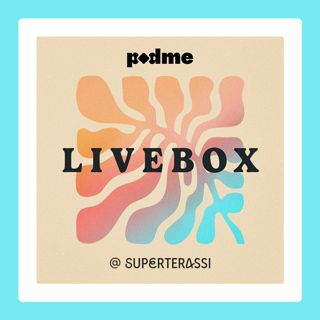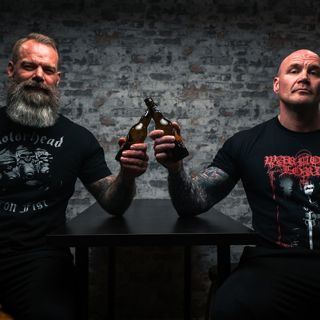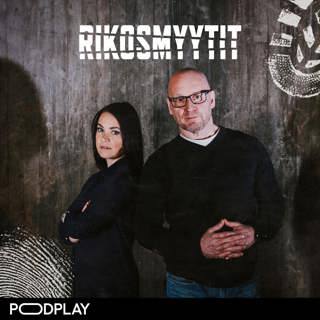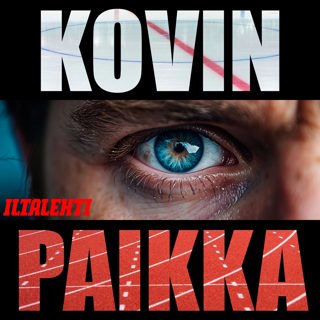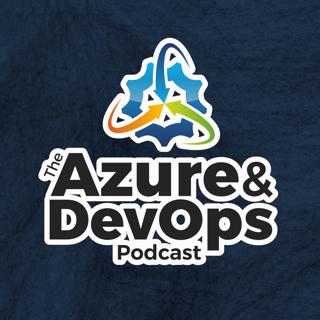
Rob Richardson on Containers in Azure - Episode 34
Today’s guest is Rob Richardson — a software craftsman building web properties in ASP.NET, Node, Angular, and Vue. He’s a software developer, a community leader, a mentor, and a business owner (of Richardson & Sons.) Rob is also a Microsoft MVP; published author; frequent speaker at conferences, user groups, and community events; and a diligent teacher and student of high-quality software development. As an expert on Containers in Azure, Rob gives his insights and recommendations. In this episode, he explains the critical steps when creating a container, what developers should consider when looking to run and support Containers through Azure, and much, much more. Topics of Discussion: [:47] About today’s episode and guest. [1:26] Jeffrey welcomes Rob to the podcast. [1:52] What are Containers ready for so far in Azure? [4:15] How did Rob come to focus on Containers? [5:56] Does Rob consider Containers more of a Dev concept or an Ops concept? [8:42] Rob’s advice to those with existing .NET framework applications looking to run and support Containers through Azure. [11:29] What should developers consider for .NET framework applications that are tied to Windows? [17:22] Rob outlines the critical steps for creating a container that packages up their application. [22:33] What the term ‘Image’ means in Containers. [23:31] About the Azure DevOps Podcast’s sponsor: Clear Measure. [23:57] If a build succeeds (from a continuous integration process starting with the container), does Rob recommend continuing by promoting the container to various environments along the way to production? [25:50] How many application components should go in a single container? And if you’re doing a .NET build, should you intentionally do it only on a few projects or should you do it at the solution level? [30:25] How do Containers affect what your monthly Azure bill might be vs. using PaaS services? [33:27] Resources that Rob recommends listeners follow-up on to learn more about this topic! [35:50] Where to find Rob online and find him at upcoming conferences! Mentioned in this Episode: Azure DevOps Clear Measure (Sponsor) Windows Containers Rob Richardson’s BlogRob’s Twitter: @Rob_RichRichardson & Sons AZGiveCamp The Azure DevOps Podcast Ep. 10: “Talking Azure DevOps at the Microsoft Ignite Event 2018” ASP.NET Node Angular Vue Azure Kubernetes (AKS) Azure Container Instances (ACI) Azure Web Apps Docker Docker Hub Azure Container Registry Platform as a Service (PaaS) Rob’s upcoming presentations DockerCon Want to Learn More? Visit AzureDevOps.Show for show notes and additional episodes.
29 Huhti 201938min

Rockford Lhotka on Software Architecture - Episode 33
Today’s guest is Rockford Lhotka. Rocky is an open source architect, professional author, speaker, Microsoft Regional Director, MVP, and avid outdoorsman! He’s written numerous books on Visual Basic, C#, and CSLA .NET; and regularly speaks at major technical events. Rocky has been a mover and shaker in this industry for a long time. He got started in the late 80s, jumped onto the Microsoft bandwagon, and has never looked back since. Most notably, Rocky is the the CTO of Magenic — the leading modern application development firm that addresses the toughest, most complex software development challenges and delivers results. He is also the creator of CSLA .NET, one of the most widely used development frameworks for Microsoft .NET. This week, Jeffrey and Rocky are discussing software architecture. They discuss what Rocky is seeing transformation-wise on both the client side and server side, compare and visit the spectrum of Containers vs. virtual machines vs. PaaS vs. Azure Functions, and take a look at microservice architecture. Rocky also gives his tips and recommendations for companies who identify as .NET shops, and whether you should go with Containers or PaaS. Topics of Discussion: [:48] About today’s episode and guest. [1:10] Jeffrey welcomes Rocky to the podcast. [1:57] Rocky introduces himself and gives a rundown of how he’s gotten to this point in time. [3:15] About Rocky’s popular open source library called CSLA now on .NET Core. [6:53] Where Rocky sees the client side transformation heading on the web. [16:34] Rocky’s recommendations (for companies who identify as .NET shops) to do today. [21:20] What Rocky is paying attention to on the server side transformation. [24:07] A word from The Azure DevOps Podcast’s sponsor: Clear Measure. [24:33] How Rocky views the spectrum of Containers vs. virtual machines vs. PaaS and Azure Functions? [26:10] Which is more forward-looking? Containers or PaaS? And if someone doesn’t understand either one and is just looking to modernize, which does Rocky recommend? [28:50] Does Rocky believe that 10 years down the line, a Linux format Container is going to become the defacto standard .NET Core package format? [30:30] Why Rocky (and many other developers) are looking to Linux from a Container perspective. [34:30] What does Rocky think a microservice is? And some of the problems with the current mixed definitions. [42:12] How many pipelines are really needed to maintain and operate this overall microservice architecture? [44:08] Resources Rocky recommends listeners follow-up on to learn more. Mentioned in this Episode: Azure DevOps Clear Measure (Sponsor) Rockford Lhotka (LinkedIn) Magenic MVP Summit CSLA .NET WebAssembly Angular React Uno Platform Blazor Kubernetes Node Python PaaS Azure Functions Amazon Web Services (AWS) “Why Microservice is a Terrible Term,” by Rockford Lhotka Rockford Lhotka’s Blog NextGen Reader Gitter.im Want to Learn More? Visit AzureDevOps.Show for show notes and additional episodes.
22 Huhti 201946min

Udi Dahan on Microservices - Episode 32
This week Udi Dahan is joining The Azure DevOps Podcast! Udi is the founder of NServiceBus, the CEO of Particular Software, and Microsoft’s Regional Director. He is one of the world’s foremost experts on service-oriented architecture and domain-driven design. He started programming when he was just 8 years old and got his first professional gig at 19 years old. Soon after, he got involved with .NET, then, a number of years later, became an independent consultant. Over the years, he saw that many of his clients were struggling with building their distributed solutions, and so he founded NServiceBus — “the most developer-friendly service bus for .NET.” Soon, that became part of a bigger project; his company, Particular Software. In this episode, Jeffrey and Udi are discussing microservices and some of the trends, challenges, and problems in the software industry today. Udi gives his advice and recommendations to developers and teams on how to go about making decisions around microservices while giving examples of common mistakes and problems he often sees. He also gives advice on those looking to move forward with an existing legacy system they are trying to modernize as well as those who are looking to build something entirely new. Topics of Discussion: [:38] Make sure to visit AzureDevOps.Show for past episode and show notes. You can also find the podcast on Twitter @AzureDevOpsShow. [:56] About today’s guest, Udi Dahan. [1:33] Udi explains his journey in the software industry up to present day. [6:36] What are microservices? And in the industry, what are some of the trends, challenges, and problems of today? [18:48] A word from The Azure DevOps Podcast’s sponsor: Clear Measure. [19:14] How big is a microservice? How does Udi recommend going about making decisions around them? What are some problems and mistakes he often sees? [25:18] Udi gives advice to developers and teams on how to move forward with an existing legacy system that they’re looking to modernize (or, if they’re in the midst of building something entirely new)… who do not want to end up with an inflexible, monolithic system! [39:40] Udi’s resources that he recommends listeners take advantage of! [40:44] Udi’s last pieces of advice. [42:00] What Udi recommends listeners follow-up on. Mentioned in this Episode: Azure DevOps Clear Measure (Sponsor) Udi Dahan (LinkedIn) Udi Dahan’s Blog Twitter @AzureDevOpsShow NServiceBus Particular Software MVP Summit WCFRabbitMQ Azure Service Bus Amazon SQS .NET Rocks! Podcast Domain-Driven Design: Tackling Complexity in the Heart of Software, by Eric Evans Patterns of Enterprise Application Architecture, by Martin Fowler Eventual Consistency Loose Coupling Want to Learn More? Visit AzureDevOps.Show for show notes and additional episodes.
15 Huhti 201946min

Party with Palermo at the Microsoft MVP Summit - Episode 31
This week Jeffrey has a special episode for you all! It is recorded live, from the night before the Microsoft MVP Summit, at Jeffrey’s annual “Party with Palermo!” get-together for MVPs. Jeffrey gives an introduction to a number of MVPs who are attending the conference and reconnects with friends and colleagues in the software industry — 19 to be exact! You’ll want to stay tuned for this one to learn about what they’re currently up to in the industry and what they’re most looking forward to at this year’s MVP Summit! So what is the MVP Summit? The MVP Summit is an exclusive multi-day MVP event that is hosted in Bellevue and at Microsoft headquarters in Redmond, Washington. It is an exclusive event for all active MVPs to have in-depth technical discussions and feedback sessions, combined with networking opportunities Attending this conference are Microsoft’s Most Valuable Professionals. MVPs are technology experts who passionately share their knowledge with the community. They’re always on the bleeding-edge and have an unstoppable urge to get their hands on new, exciting technologies. They have very deep knowledge of Microsoft products and services, while also being able to bring together diverse platforms, products, and solutions to solve real-world problems. MVPs make up a global community of over 4,000 technical experts and community leaders across 90 countries and regions and are driven by their passion, community spirit, and quest for knowledge. Mentioned in this Episode: Azure DevOps Clear Measure (Sponsor) MVP Global Summit Julie Yack Microsoft Dynamics 365 David Corbin Dynamics Concepts Development Corporation (David Corbin) Richard Hundhausen Accentient (Richard Hundhausen) Jeff Fritz Jeff Fritz’s channel on Twitch: CSharpFritz Jeff Fritz’s Twitter: @CSharpFritz Jeff Fritz’s GitHub: @CSharpFritz JeffreyFritz.com (Jeff Fritz) Visual Studio channel on Twitch Microsoft Build Event 2019 Simon Timms The Azure DevOps Podcast episode 23: “Simon Timms on Azure Functions and Processes” Simon Timms Twitter: @STimms Simon Timms Blog: Blog.SimonTimms.com ASP.NET Monsters David Neal David Neal’s Twitter: @ReverentGeek David Neal’s GitHub: @ReverentGeek ReverentGeek.com (David Neal’s website) Philip Japikse SkiMedic.com (Philip Japikse’s Blog) Philip Japikse’s Twitter: @SkiMedic Philip Japikse’s Email: SkiMedic@Outlook.com The Dallas ASP.NET User Group (the user group Toi B. Wright runs) Toi Beveridge Wright Toi Beveridge Wright’s LinkedIn Toi Beveridge Wright’s Twitter: @MissToi Eric Smith CodeSmith Tools (Eric Smith) Exceptionless.com (Eric Smith) Blake Niemyjski Blake Niemyjski’s Twitter: @BlakeN Blake Niemyjski’s GitHub: @Niemyjski Jonathon “J” Tower Trailhead Technology Partners (Jonathon “J” Tower) J Towers’ Twitter: @JTowerMI Stack Overflow LinkedIn Learning Onion Architecture Damien ________’s Twitter: @Damien_BOD DamienBOD.com (Damien ________’s website) Richard Campbell .NET Rocks! (Richard Campbell’s Podcast) RunAsRadio (Richard Campbell’s Podcast) Mike Benkovich BenkoTips.com (Mike Benkovich) Mike Benkovich’s Twitter: @MBenko Mike Benkovich on LinkedIn Learning Matthew Renze MatthewRenze.com (Matthew Renze) @AzureDevOpsShow on Twitter
8 Huhti 201941min

Ted Neward on the ‘Ops’ Side of DevOps - Episode 30
Your host, Jeffrey Palermo, is excited to bring you this week’s episode with his guest, Ted Neward! Ted is an Independent Consultant and Architect, as well as a long-time columnist of CODE Magazine. He also teaches Android Development (using Java) and iOS Development at the University of Washington as a Guest Lecturer. In this week’s episode, Ted and Jeffrey are going to be talking about the ‘Ops’ (AKA the operations) side of DevOps. They discuss how operations is implemented in the DevOps movement, the role of operations, how Dev and Ops should work together, what companies should generally understand around the different roles, where the industry is headed, and Ted’s many recommendations in the world of DevOps. Topics of Discussion: [:44] About this week’s episode with Ted Neward. [1:55] About the MVP Global Summit in Ted’s hometown! [3:10] Ted’s take on how ‘operations’ is getting implemented in this DevOps movement. [9:48] Ted’s small tangent about the making of Office Space. [10:45] Ted’s thoughts on using the Cloud with operations. [12:35] Ted discusses the role of operations, gives a recent example from his position at Smartsheet, and compares Dev and Ops and how they should be working together. [21:14] Jeffrey and Ted discuss where the industry is headed, and the value of Ops. [27:10] What should companies and teams (QA, Devs, and Ops) know, put in place for their regular applications, and learn and understand around this space? [29:16] A word from The Azure DevOps Podcast’s sponsor: Clear Measure. [29:42] Jeffrey and Ted’s recommendations for mastering C# and .NET development, as well as Ted’s hopes for the future of coding schools and what developers should be taught. [34:49] Talking DevOps diagnostics and general rules of thumb for developer teams for configuring and building an effective enterprise system. [43:00] The benefit of including the Ops and the QA team as a part of the project discussions with the Dev team. [49:40] What Ted recommends listeners follow-up after today’s podcast. [52:08] Where to find Ted online. Mentioned in this Episode: Azure DevOps Clear Measure (Sponsor) Ted Neward (LinkedIn) MVP Global Summit CODE Magazine iSchool at the University of Washington Office Space (Film, 1999) Smartsheet LinkedIn Learning CLR via C# (Developer Reference), by Jeffrey Richter CoreCLR page on GitHub Shared Source CLI Essentials, by David Stutz, Ted Neward, and Geoff Shilling Douglas E. Comer’s Amazon Book Page Richard Steven’s Amazon Book Page Advanced Programming in the UNIX Environment, by W. Richard Stevens and Stephen A. Rago The Azure DevOps Podcast episode: “Eric Hexter on DevOps Diagnostics” Effective Enterprise Java, by Ted Neward Windows Management Instrumentation The Pragmatic Programmer: From Journeyman to Master, by Andrew Hunt and David Thomas @TedNeward on Twitter Blogs.TedNeward.com Neward & Associates Want to Learn More? Visit AzureDevOps.Show for show notes and additional episodes.
1 Huhti 201954min

Matt Mitrik on GitHub with Azure Boards - Episode 29
Today’s guest is Matt Mitrik, the Sr. Program Manager of the Azure DevOps Services Team. Matt has been working with ALM and DevOps tools for roughly 13 years. He joined Microsoft in 2006 and has been there ever since. Originally, his journey started at the TFS Team in migration tools, helping people get from the previous generation of version control and work tracking tools. Now, within the Azure DevOps Services Team, he’s working on Azure Boards, and is helping to build that integration between GitHub and Azure Boards. In this week’s episode, Jeffrey and Matt will be discussing GitHub with Azure Boards. They talk about the level of integration that’s going to be in Azure Boards (how they’re thinking about things right now and where they want to go), their efforts towards new project workflow and integration for Azure Boards, and the timeline Matt’s team is looking at for these changes. Matt also gives his pitch for GitHub as the future premiere offering and why you should consider migrating. Topics of Discussion: [:47] About today’s show with Matt Mitrik. [1:13] Matt speaks about his background in the space and how he landed at Microsoft. [3:54] What works now with Azure Boards? And where does Matt want it to be? [8:33] What’s the process for moving something from Azure Repos to GitHub and vice versa? Would Matt recommend moving from Azure Repos to GitHub? [11:03] Where does the pull request feature fit in? With the work in Azure Boards or where the Git repository goes? [13:55] When a new feature is being implemented, is the right place for journaling within the user story or within the pull request? [18:34] Matt speaks about the level of integration that’s going to be in Azure Boards; how they’re thinking about things right now and where they want to go. [22:35] A word from The Azure DevOps Podcast’s sponsor: Clear Measure. [23:01] Matt talks about their efforts towards new project workflow and integration for Azure Boards. [24:41] The timeframe Matt’s team is looking at for these new changes. [25:05] The strides Matt’s team is taking with regards to integration between GitHub and Azure DevOps properties. [27:02] From a strategy perspective, what’s Matt’s pitch for GitHub being the future premiere offering and why you should migrate? [35:20] Matt talks about future options for customer feedback within Azure Boards. [39:04] What Matt recommends listeners follow-up on if they want to learn more. [40:34] Matt teases the next big thing on the horizon for his team. Mentioned in this Episode: Azure DevOps Clear Measure (Sponsor) Matt Mitrik (LinkedIn) The Azure DevOps Podcast episode: “Phil Haack on DevOps at GitHub” Microsoft Teams Slack The Azure DevOps Podcast episode: “Aaron Bjork on Driving Team Productivity and Promoting Culture Through Azure DevOps” Want to Learn More? Visit AzureDevOps.Show for show notes and additional episodes.
25 Maalis 201941min

Phil Haack on DevOps at GitHub - Episode 28
Phil Haack joins the podcast to discuss DevOps at GitHub! Phil has an interesting and extensive career background. He started out as a Manager of Software Engineering back in 1997. Since then, he’s done a lot — but some of his recent highlights include: being the main Program Manager at Microsoft from 2007-2011 (responsible for ASP.NET MVC and NuGet), and leading the Client Apps team as Director of Engineering at GitHub. Now, most recently, he has founded his own company, Haacked, which he started to mentor software organizations to be the best version of themselves. In today’s episode, your host, Jeffrey Palermo, and Phil Haack, dive deep into discussing DevOps at GitHub. They talk about his role as Director of Engineering; how GitHub, as a company, grew while Phil worked there; the inner workings of how the GitHub website ran; and details about how various protocols, continuous integration, automated testing, and deployment worked at GitHub. Topics of Discussion: [:48] About today’s episode with Phil Haack. [1:10] Phil talks about how he became the Program Manager at Microsoft in charge of ASP.NET MVC and NuGet, and what the role entailed. [4:00] The transformation Phil helped lead that continues to affect .NET developers today! [5:35] Phil shares the high points of his career at GitHub. [7:56] How Phil’s role at GitHub developed, and how (and why) GitHub went from “no managers and no meetings” to hiring on managers and starting meetings. [12:10] When did GitHub start to distribute regionally? [13:43] How many leased offices did GitHub crop up while Phil worked there? [15:25] What Phil is currently working on since leaving GitHub! [17:27] About the new book Phil is writing about GitHub. [20:07] Major strategic decisions and key aspects that gave GitHub the ability to put out features at a really fast clip for a really long time (with an incredible quality track record to boot!) [24:18] A word from The Azure DevOps Podcast’s sponsor: Clear Measure. [24:44] Architecturally, is GitHub.com one website or essentially two hundred different web applications that make up all the URLs of the website? [26:50] Was there a standard pipeline structure that GitHub maintained (or a common set of steps), or was it moreso a ship-it-however-you-can protocol per service? [27:50] If Phil had multiple services in the client application, did he have a separate Git repository for each one of those, OR, one Git repository for his team with multiple, independent services? [29:52] Did every continuous integration build have its own Git repository? [32:30] What types and quantity of automated testing did Phil pack into the continuous integration (CI) build? [33:48] Phil highlights some significant things that happened in the CI build step. [34:31] Did Phil find any good frameworks that worked out in the UI space? [35:02] What an automated test can’t tell you and why it’s so crucial to have a really good tester! [36:15] When they did have automated deployment between environments, what tools and methods did Phil use for those deployments? [38:04] For the services they were going to deploy to GitHub servers, how many environments did Phil set up in the deployment pipeline ahead of production? [41:07] The major tools on the deployment side when Phil was working at GitHub. [43:44] What Phil recommends listeners to follow-up on to continue their research! Mentioned in this Episode: Azure DevOps Clear Measure (Sponsor) Phil Haack (LinkedIn) Haacked MVC Framework GitHub for Dummies, by Sarah Guthals and Phil Haack Hubot Ruby on Rails Scientist.NET Electron ChatOps Want to Learn More? Visit AzureDevOps.Show for show notes and additional episodes.
18 Maalis 201946min

Greg Leonardo on Deploying the Azure Way - Episode 27
On today’s episode, Jeffrey Palermo welcomes back return guest, Greg Leonardo. Greg is a Cloud Architect at Campus Management Corp. and Webonology. Greg’s main focus is to help organizations with Cloud adoption and innovation. He’s been working in the IT industry since his time in the military (1993), and is a developer, teacher, speaker, and early adopter. He’s worked in many facets of IT throughout his career and is the President of TampaDev a community meetup that runs #TampaCC, Azure User Group, Azure Medics, and various technology events throughout Tampa. The previous episode Greg was on (episode 019 - “Greg Leonardo on Architecting, Developing, and Deploying the Azure Way”) Jeffrey and Greg discussed many topics around deploying in Azure — so in today’s episode, they’re continuing the conversation — this time getting even deeper into the topic! They’re discussing some of the topics from his book, Hands-On Cloud Solutions with Azure: Architecting, developing, and deploying the Azure way; infrastructure as code; provisioning environments; how to watch your environments; and much more on what developers targeting Azure need to know! Topics of Discussion: [:47] About today’s episode. [2:35] Greg highlights what is so unique about deploying the Azure way. [6:04] A critical piece of the DevOps mindset is automatically provisioning and changing new environments — How does that apply to Azure? [8:03] What is a run book and how does it work? [9:10] Do the scripts to create these environments reside in Azure or do they reside in your Git repository? [10:32] Greg talks about the kinds of issues he finds when software in a system has been in place for a long time and the company is trying to transition to Azure. [14:00] Why it is so crucial to switch to automated deployment with Azure. [16:01] A word from The Azure DevOps Podcast’s sponsor: Clear Measure. [16:25] Greg gives the lowdown on how to monitor or log environments in Azure. [19:58] Greg breaks down the pieces of what services you need (i.e. app service, Azure SQL, application insights, log analytics, etc.) for what you’re monitoring or logging and how he uses them. [24:26] How many production Azure subscriptions does Greg run? [27:30] What else Greg thinks developers targeting Azure need to know! [30:11] Jeffrey and Greg chat and reminisce about old coding and the internet. [35:37] Does Greg know of any replacements for remote application in Azure? Mentioned in this Episode: Azure DevOps Clear Measure (Sponsor) Episode 019 - “Greg Leonardo on Architecting, Developing, and Deploying the Azure Way” Hands-On Cloud Solutions with Azure: Architecting, developing, and deploying the Azure way, by Greg Leonardo Greg Leonardo (LinkedIn)GregLeonardo.com Campus Management Corp. Webonology TampaDev Vets in Tech Run book Azure Monitor Azure Log Analytics Want to Learn More? Visit AzureDevOps.Show for show notes and additional episodes.
11 Maalis 201942min






